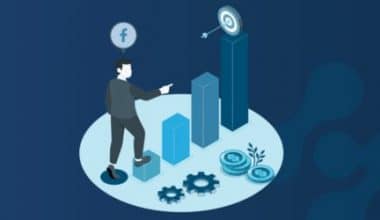Your data is just as useful as your ability to organize and analyze it. Due to the increasing volume and variety of data, it is crucial to examine it for accuracy and consistency. Poorly handled data costs businesses millions of dollars every year in lost productivity, extra expenses, and unrealized potential, but only around 3% of data fulfill quality criteria. Here comes data profiling, a potent tool in the war against inaccurate information. It’s the process of keeping an eye on and fixing up your data so you can use it to your benefit in the business world. This article delves into data profiling open source tools, the example, and data profiling vs data mining. So, keep reading!
What is Data Profiling?
Data profiling is the systematic procedure of scrutinizing, evaluating, assessing, and condensing datasets to acquire an understanding of the data’s quality. Data reliability, completeness, regularity, timeliness, and availability are just a few examples of the various factors that affect data quality. The practice of this tool is becoming increasingly crucial for enterprises, as it enables them to ascertain the accuracy and validity of their data, identify potential risks, and gain insights into overall trends. The implementation of data cleansing techniques can effectively mitigate the occurrence of expensive errors commonly found in customer databases, such as missing, redundant, and non-conforming values. This tool can also provide companies with valuable insights that can inform important business decisions.
Data Profiling Example
The implementation of data profiling can be applied to a diverse range of examples where ensuring data quality is of utmost significance. Thus, these examples include:
- For a data warehouse or business insight project, for instance, it may be necessary to compile information from several different databases or systems. This tool can also be applied to these projects to help spot problems with the extraction, transformation, and load (ETL) tasks and other data entry processes so that they can be fixed before moving further.
- Today, DF is often used to examine metadata to find the source of an issue in a large dataset. Using Hadoop and SAS’s data and data profile capabilities, for example, you can locate the categories of data most useful to the development of novel business strategies.
- The SAS injector for Hadoop provides a graphical user interface for profiling Hadoop data sets and storing the findings. Metrics for metadata value, visual representations of processes, and other charts are generated during profiling, all of which can be used to better evaluate the data.
- Impact in the actual world is possible with DF tools. The Texas Parks and Wildlife Department, for one, enhanced the visitor experience by utilizing the DF capabilities of SAS information management. Data cleaning, normalization, and geocoding were all accomplished with the use of DF tools. The data acquired in this way improved customer service and made it easier for Texans to enjoy the state’s enormous parkland and waterways.
Data Profiling Tools
Data profiling tools eliminate or significantly reduce the need for human intervention by identifying and digging into data quality problems like redundancy, accuracy, consistency, and incompleteness. These tools examine data sources and connect them to their metadata so that mistakes can be further investigated. Additionally, they supply data professionals with numerical data and statistics, often in tabular and graphic formats, about data quality. Below are the various data profiling tools:
#1. Quality Data Informatics
This is also one of the data profiling tools that can be used with both local and remote servers. Automatic data analysis and the finding of relationships and problems are made possible by the tool thanks to AI insights. Data Quality also supports transformations for consolidating, deduplicating, standardizing, and validating data sets.
#2. SAP Business Objects Data Services (BODS)
This is one of the best-known data profiling tools on the market. It allows firms to easily conduct in-depth analyses to spot discrepancies and other issues with their data. Redundancy tests, pattern distribution, cross-system data dependency analysis, etc., are all simple tasks that may be accomplished using this tool.
#3. Talend Open Studio
Its data integrity tool facilitates this tool by combining the functions of an info profiler, data explorer, structure manager, and data manager.
#4. Melissa Data Profiling
This tool enables a wide range of operations for businesses, including profiling, matching, enriching, verifying, and more. It’s user-friendly and effective for a wide variety of data in a variety of formats. Its profiling features are useful for verifying data before it is fed into the data warehouse, thereby ensuring that it is consistent and of high quality.
In addition, it can do operations like data discovery and extraction, data quality surveillance, data governance improvement, metadata repository creation, standardized data, and so on.
#5. DataFlux Data Management Server
This tool has scalable features, it is also equipped to handle enterprise data consolidation, data set integration, and data quality enforcement.
Data Profiling Open Source Tools
The data profiling open source tools are as follows:
#1. Quadient DataCleaner
Quadient DataCleaner is like a trusty detective that you can count on to thoroughly investigate your entire database and ensure that every piece of information is up to par. This is one of those open-source tools that are easy to use and seamlessly integrates into your workflow. This tool is a go-to for many when it comes to analyzing data gaps, ensuring completeness, and wrangling data.
Quadient DataCleaner empowers users to elevate their data quality by enabling them to perform regular data cleansing and enrichment. Not only does the tool ensure top-notch quality, but it also presents the outcomes in user-friendly reports and dashboards for easy visualization. Although the community version of the tool is readily available to all users without any cost, the price of the premium version with cutting-edge features will be revealed after assessing your usage scenario and commercial requirements.
#2. Hevo
Hevo is the ultimate solution for those who want to streamline their data pipeline without having to write a single line of code. Hence, with “no code” technology, software customization is no longer limited to programming experts. Anyone can tweak the software to their liking using a user-friendly digital interface, without having to tinker with the underlying code.
In addition, Hevo is like a master conductor, seamlessly weaving together data from various sources to create a harmonious symphony of information. And the best part? It’s fully managed, so you can sit back and enjoy the show without worrying about the technical details. Also, with this app, you can effortlessly transport your analyzed data to a plethora of data warehouses, ensuring that your well-organized data is safely stored. In addition to that, our platform boasts live chat assistance, instantaneous data tracking, and top-notch internal security measures.
Meanwhile, for those seeking to elevate their professional game, Hevo offers a tantalizing opportunity to test their services free of charge for a fortnight. After this brief period of exploration, users can select from a variety of tiered pricing options to suit their needs.
#3. Talend Open Studio
Talend Open Studio is a popular tool for data integration and profiling, widely recognized for its open-source approach. This tool effortlessly performs ETL and data incorporation tasks, whether in batches or in real-time.
It possesses the power to purify and organize data, scrutinize the traits of textual fields, and seamlessly merge information from any origin. And that’s just the beginning! This tool offers a distinctive advantage by enabling the integration of longitudinal data. This is a open-source tool that boasts an intuitive interface that showcases a plethora of graphs and tables. These visual aids elegantly display the results of the profiling for every data point. While Talend Open Studio is available to all users at no cost, the premium versions of this tool offer a plethora of extra features and are priced between $1000 – $1170 monthly.
#4. Informatica Data Quality and Profiling
Developers and non-technical people alike will find Informatica Data Quality and Profiling invaluable for rapidly profiling data and conducting meaningful analyses. Data abnormalities, linkages between data sets, and duplicate data can all be uncovered with the help of Informatica. In addition, you may check the accuracy of addresses, create data tables for use as references, and use predefined data rules. The Informatica-protected platform also facilitates team collaboration on data chores.
#5. OpenRefine
OpenRefine is a free and open-source tool that may be downloaded and used by anyone. This program is tailored to assist businesses in dealing with “messy data,” or data sets that contain anomalies or blanks. OpenRefine helps experts with data profiling, reconciliation, cleansing, and loading. It also offers multilingual customer care in more than 15 languages.
Data Profiling vs Data Mining
Data profiling and data mining are frequently employed in the fields of machine learning and statistical analysis, but their meanings vary widely. It’s not uncommon for people to use these names interchangeably or get them mixed up. Despite appearances, they are distinct concepts. In the first place, data mining has been around for a while, but data profiling is still a niche area of study. However, to help you, we have explained the differences between data profiling and data mining. They are:
- The term “data profiling” is used to describe the method of examining the data and drawing conclusions and statistics from it. Due to its usefulness in evaluating data quality, it is an indispensable tool for any business. Mean, median, percentile, frequency, maximum, minimum, and other measures can all be used in data profiling for businesses. However, data mining is the practice of discovering new information and patterns within a current database. It’s the method of analyzing an already existing database and turning raw data into actionable insights.
- Data profiling generates a concise report of data attributes, whereas data mining endeavors to uncover valuable yet inconspicuous findings from the data.
- Data profiling facilitates the utilization of data, whereas data mining involves the application of data.
- Data profiling software includes Microsoft Office, HP Info Analyzer, Melisa Data Profiler, and many others. Orange, RapidMiner, SPSS, Rattle, Sisense, Weka, etc., are just some of the tools that are utilized for data mining.
What Are the Steps of Data Profiling?
- Gathering descriptive statistics such as minimum, maximum, tally, and total.
- Collecting data types, extent, and patterns of recurrence.
- Attributing keywords, descriptions, or categories to data.
- Assessing data quality and the possibility of conducting merges on the data.
- Discovering and evaluating the authenticity of metadata.
What Is Data Profiling in ETL?
Data profiling within the context of ETL refers to a comprehensive examination of the source data. The system endeavors to comprehend the arrangement, caliber, and substance of the primary data and its associations with other data. This occurs within the Extract, Transform, and Load (ETL) process and facilitates the identification of suitable data for organizational initiatives.
Why Is Data Profiling Important?
Data profiling is a useful tool for data exploration, analysis, and management. There are several reasons why it should be an integral part of your company’s data management. At the most fundamental level, data profiling ensures that the data in your tables correspond to their descriptions.
What Is the Difference Between Data Quality and Data Profiling?
Data profiling refers to the systematic examination of the composition of data, including its structural, semantic, and numerical characteristics. However, “data quality” refers to the systematic process of verifying the accuracy, completeness, and consistency of data to enhance operational efficiency and effectiveness.
What Are the Three Types of Data Profiling?
They include:
- Structure discovery
- Content discovery
- Relationship discovery
In Conclusion
The process of data profiling is an essential and pivotal step in every data management or analytics endeavor. Hence, to ensure a seamless project experience, it’s crucial to kick things off with a bang. By starting with a clear understanding of the project timeline, you’ll be able to provide accurate estimates and set realistic expectations. Additionally, having access to top-notch data from the get-go will allow you to make informed decisions and stay on track toward success.
References
- simplilearn.com
- techtarget.com
- blog.hubspot.com
- indeed.com
Related Articles
- Prescriptive Analytics Tools & Techniques: 9+ Best 2023 Options
- DATA MANAGEMENT: Tools For Effective Data Management
- CUSTOMER 360: Meaning, Salesforce, Platform & Degree Views
- DATA INTEGRATION: Definition, Applications and Tools
- DATA ENGINEER: Skill Requirement And 2023 Salary
- FINANCIAL DERIVATIVES: Definition, Types, and Examples






